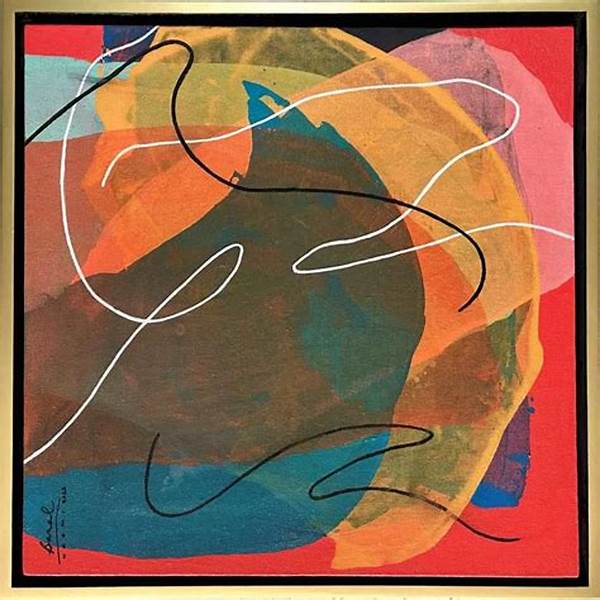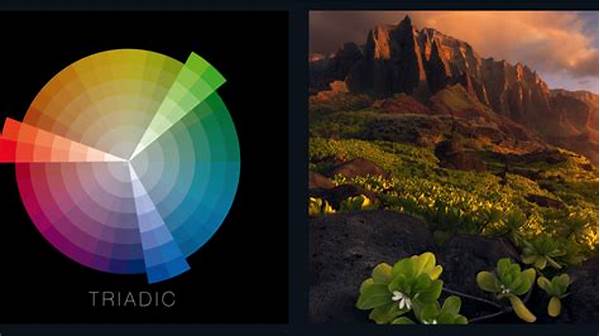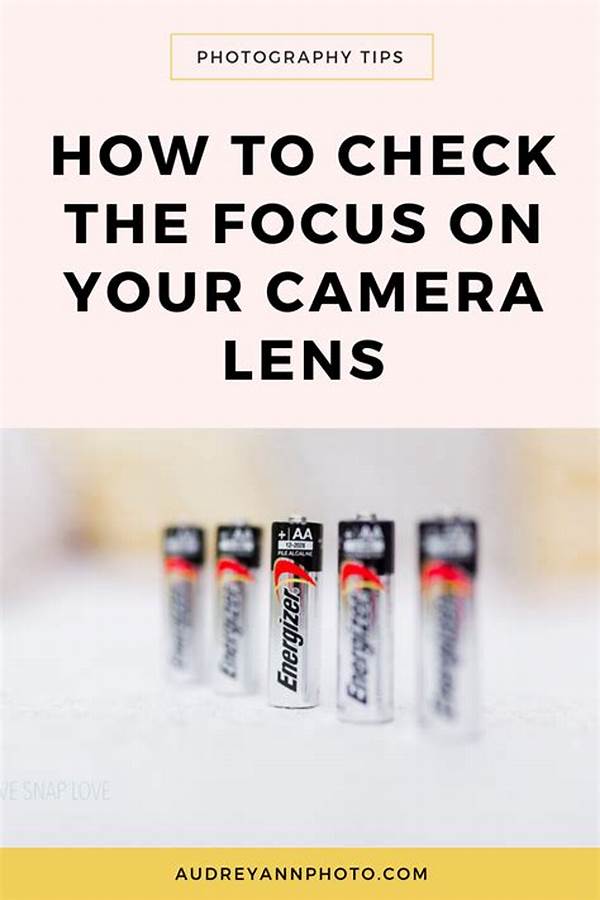Hey there, art lovers! Today we’re diving into a fascinating topic: traditional art forms in modern contexts. We often think of traditional art as something that’s a little dusty, sitting in museums or ancient temples. But guess what? These age-old art styles are making their way into our modern world in the coolest ways possible. Let’s explore how timeless traditions are being reinvented and celebrated in today’s ever-changing landscape.
Read Now : Utilizing Smartphone Photography Apps
The Blending of Old and New
Ever stumbled across an Instagram feed that blends century-old craft with a modern twist? That’s exactly what’s happening all over the world. Artists are increasingly inspired to blend traditional art forms in modern contexts. Take Japanese Kintsugi, for instance. Originally used to mend broken pottery with lacquer and powdered gold, it’s now even being employed in mixed media art to make profound statements about resilience and beauty in imperfection. Similarly, Indian Madhubani paintings, traditionally used to depict mythological narratives, are now found narrating social issues on metropolitan walls! Traditional art forms in modern contexts aren’t just a passing trend; they’re a brilliant fusion that shows us how old wisdom can inform new visions. It’s like the past high-fiving the future!
In our interconnected, digital world, these blending efforts are more visible—and accessible—than ever. Digital artists utilize traditional motifs as templates for futuristic designs, spanning everything from fashion to interior design. The result? A striking juxtaposition of old and new that captivates audiences in entirely new ways. So next time you see a tattoo inspired by Aboriginal dot painting or a mural featuring African tribal patterns, take a closer look. It’s more than just art—it’s a vibrant conversation between generations, standing as proof that traditional art forms in modern contexts can offer compelling cultural dialogues.
Tiny Tidbits on Traditional Art in Modern Scenes
1. Wearable History: Traditional textile arts like African Kente stripes are now gracing the catwalks of Paris and Milan, seamlessly integrating into haute couture.
2. Living Rooms: Tapestry art once on castle walls now adorns modern minimalist apartments, adding texture and history to everyday spaces.
3. Doodle Books: Zentangle is modern but echoes Native American and Celtic patterns, making structured doodling a form of meditation and art.
4. Pop Music: You might hear traditional Indian ragas blended into your favorite electronic dance music tracks if you listen closely!
5. Film: Documentaries that focus on traditional art forms are being streamed widely, making cultural education accessible to all.
Next-Level Fusion
Let’s face it—traditional art forms in modern contexts are pretty much the ultimate glow-up. One exciting area is how street artists are channeling ancient styles. Imagine passing by a city wall and seeing a mural that looks straight out of a Renaissance painting but is filled with 21st-century themes. The blend of classical techniques with modern media creates something both evocative and insightful. This artistic interaction is not exclusive to visual arts—it’s spilling over into theatre and music as well. Classical operas are getting a rock and roll twist, and ancient myths are being reenacted with holographic projections.
Moreover, technology is taking the integration of traditional and modern art to an elevated level. Virtual and Augmented Reality technologies allow us to ‘step inside’ art in ways never before possible. By experiencing these art forms in their original settings or even interacting with them, we gain a deeper appreciation for their cultural significance as well as their aesthetic beauty. Traditional art forms in modern contexts provide that unique bridge linking our shared past to our dynamic future. And guess what? That bridge is incredibly sturdy, thanks to both the creativity of contemporary artists and the enduring power of timeless crafts.
Modern Spins on Traditional Themes: A Dive Deeper
1. Digitalization: Traditional art forms in modern contexts like pixel art inspired by ancient mosaics can make you rethink the role of modern technology in storytelling.
2. Sustainability: Craft techniques using biodegradable materials have newfound relevance as part of the sustainable art movement.
3. Tactile Experience: Texture-rich traditional textiles are used in sensory installations for therapeutic experiences.
4. Online Platforms: Etsy and similar sites are bustling with an array of artists who personalize traditional crafts to modern tastes.
5. Festival Culture: Traditional dance and music forms often find a place in modern music festivals, offering cultural variety to audiences.
Read Now : Utilizing Negative Space Effectively
6. Collaborations: Artists collaborating beyond borders bring cultural art forms into international contexts.
7. Education: Workshops around traditional crafts are a hit in corporate spaces for team building.
8. Tourism: Art tours featuring live performance arts breathe life into cultural tourism, introducing ancient practices to travelers.
9. DIY Projects: Crafts like macramé, with roots spanning centuries, have turned into today’s DIY darlings.
10. TV Shows: Cooking shows and competitions revive age-old recipes, blending culinary traditions with today’s tastes.
Art Adventures in Our Time
So, what’s it like to live in a time where traditional art forms in modern contexts are thriving like never before? It’s an adventure! It’s akin to discovering a secret code that connects us with cultures and traditions otherwise long-forgotten. Imagine finding yourself at an art exhibit, where alongside works of contemporary genius, traditional masterpieces decorated with modern interpretations are showcased. It’s an eclectic mix, a celebration of old meeting new.
Art isn’t just about observing; it’s about experiencing and participating. With traditional art forms finding modern expressions through interactive art installations, you’re invited not just to see but to feel. It’s experiential, engaging, and immensely gratifying. Museums are no longer quiet halls; they’ve turned into spaces that pulsate with life and energy, allowing visitors to become part of the art. The conversation between traditional art and contemporary iterations creates a narrative that’s fresh, invigorating, and deeply meaningful.
Keeping It Real with Traditional Art Contexts
Traditional art forms in modern contexts have got a unique, grounding flair, don’t they? Picture those rad street fairs or hip pop-up shops where artisans are carving, painting, or crafting live. You feel the pulse of history with every meticulous stroke and chisel. It’s like time-traveling to a community gathering of makers. There’s this tangible connection. It’s totally everything! Plus, witnessing art in action reminds us of the human stories embedded in each work. You don’t just see history—you breathe it.
Even on social media, where our feeds are jam-packed with fleeting digital content, something as authentic as a short clip of traditional craft techniques can stand out, offering that rare peek into what makes us all human—our roots. While the buzz is about the next big digital thing, these timeless art styles humbly hang around, influencing the influencers, and trust me, that’s the sweet spot. They speak truth to power, showing us that in a world racing ahead, wisdom from our past can still have the last word.
Wrapping It Up: Tradition Meets Modern
To wrap this up, traditional art forms in modern contexts are not just surviving—they’re thriving. They blend the ancient with the avant-garde, offering us a way to appreciate the richness of different cultural heritages while engaging with contemporary issues. Artists reimagining traditional forms rejuvenate our collective imagination. Art becomes not just a canvas of colors but a tapestry of time and life.
The beauty of this fusion is its ability to create new dialogues and connections across cultures and generations. Whether you’re an art historian, a casual enthusiast, or a digital-era creator, the convergence of old and new art forms offers endless inspiration. Let’s continue to celebrate and support this evolution of art. After all, in an ever-evolving world, it’s comforting to find that traditional art forms, no matter how repurposed, continue to offer a steadfast bridge from our rich past to a bright, imaginative future.



